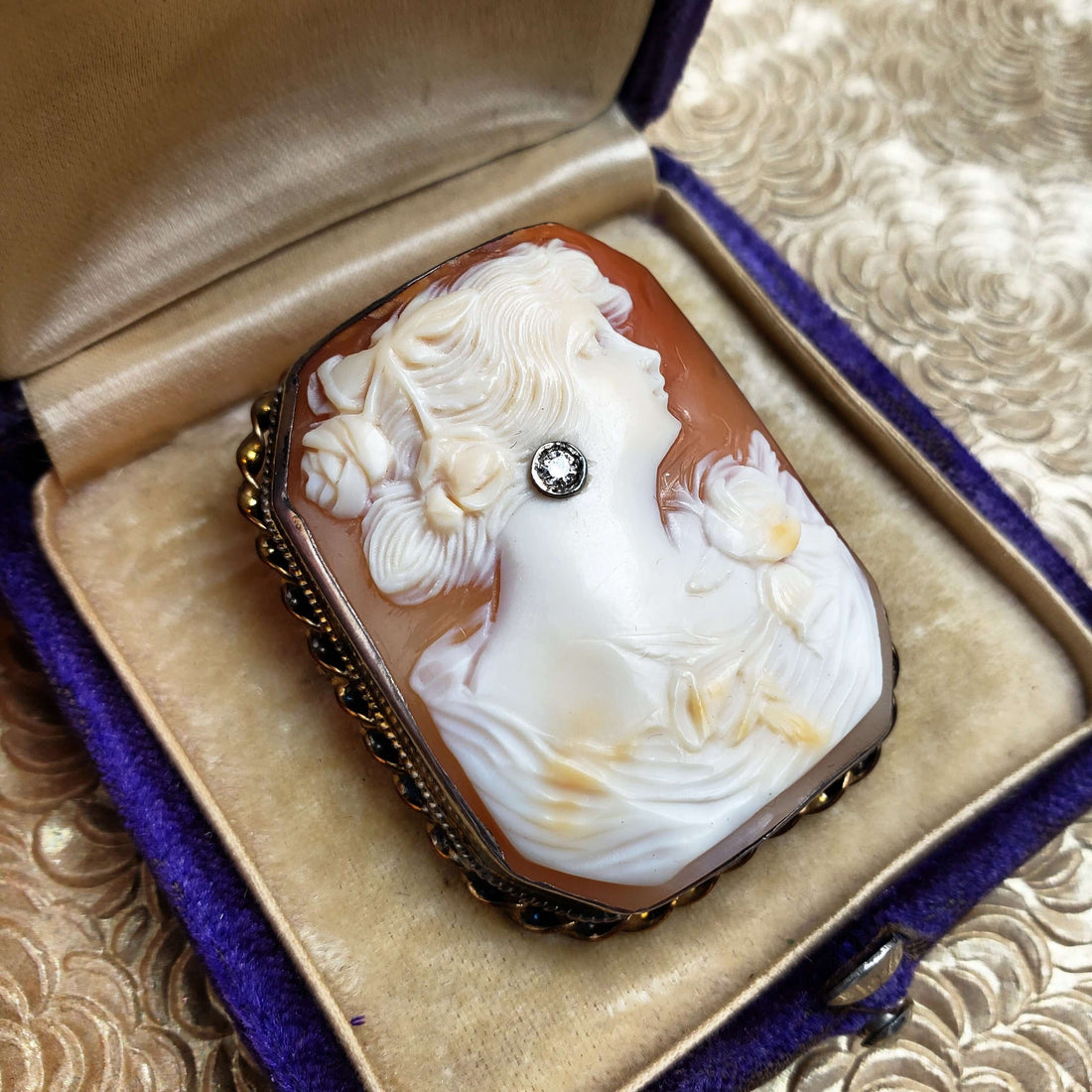
Cameos - The Jewelry of Emperors
by Kat Paulick
The word “cameo” conjures images of an ivory portrait carved into a peachy oval pendant, but cameos have a rich history and come in all shapes, sizes, and colors. Allegedly, the word cameo is derived from kame’o, a Hebrew word meaning “magic square.” Early cameos, carved and worn in ancient Greece and Rome, were made from onyx or agate and featured images of gods and goddesses or scenes from mythology. A Hellenistic woman wanting to draw romance and seduction into her life might wear a cameo depicting a dancing Eros, the god of passionate desire.

Cameo Carver In Action
Cameos are believed to date back to the third century BC, but the art form has truly stood the test of time. Across cultures and centuries, many materials have been used to create these beautiful carvings. Semi-precious stones were favored in ancient Greece and Rome, and seashells have been used for centuries.

Victorian Lava Cameo on the Right. Image: The Gemmary
Lava cameos, made from porous rock formed by the consolidation of volcanic ash, became a popular souvenir after the eruption at Pompeii. Tourists, including wealthy young women completing the traditional extended European vacation known as the “Grand Tour,” came to see the ruins and brought home lava cameos. These cameos depicted philosophers, politicians, artists, and dignitaries.
 The Great Cameo of France. Image: Wikipedia
The Great Cameo of France. Image: Wikipedia
Initially, each cameo was carved by hand, creating a real one-of-a-kind work of art. The combination of semi-precious stones and expert craftsmanship made them popular with royalty. Napoleon’s coronation crown, “Couronne de Sacre,” was plated in gold and studded with dozens of cameos. He loved the style so much that he founded a school to train artisans in its creation.
Russian Empress Catherine the Great was a collector who amassed over 32,000 cameos during her lifetime. Queen Victoria’s love of cameos, favoring those made from seashells, surged their popularity in 19th-century England. Pope Paul II made them into rings and displayed many on his fingers whenever possible. It’s rumored that his refusal to wear gloves, which would hinder his ability to show off his prized jewelry, led him to “catch the chill that meant his death.”

The Portland Vase. Image: Wikipedia
Beyond jewelry, some famous examples of the cameo art form provide the technique with a larger canvas. The Portland Vase is considered one of the finest masterpieces of Roman art. Created between 1 and 25 AD from violet and white glass, it depicts a beautifully carved scene involving humans and snakes. The meaning of this scene is a subject of debate among historians. Whether mythological or historical, the scene and the vase have captivated enthusiasts for thousands of years.
 Carved Helmet Shell. Image: The Gemmary
Carved Helmet Shell. Image: The Gemmary
As technology advances, cameos are no longer only accessible to the wealthy. Using molds and machines instead of hand-carving, along with less expensive materials, has made the cameo more affordable. Still, ancient cameos are unparalleled in beauty and uniqueness. They serve as windows into the cultures of the past, and it is easy to see why they are adored by royalty, art lovers, and historians alike.
